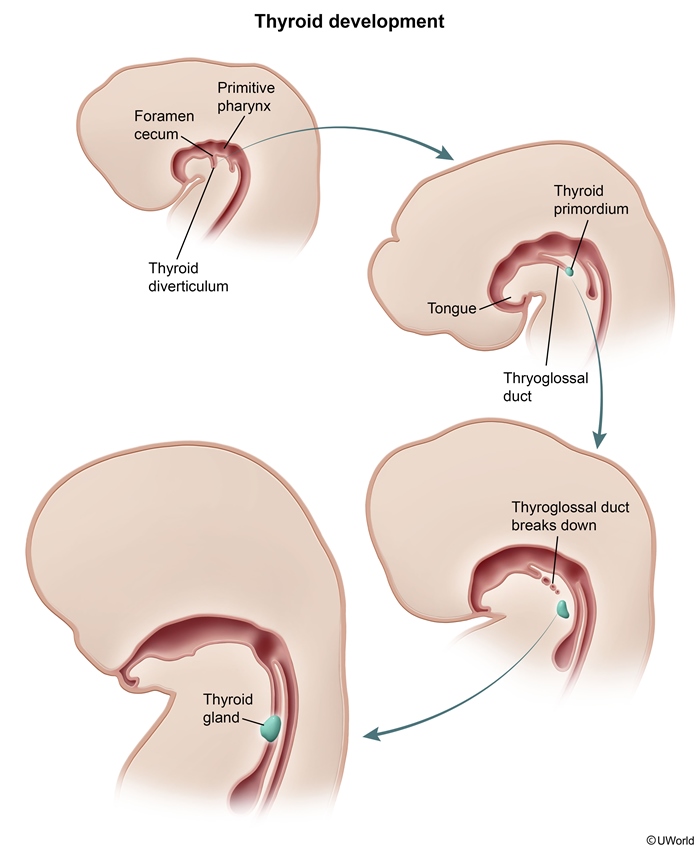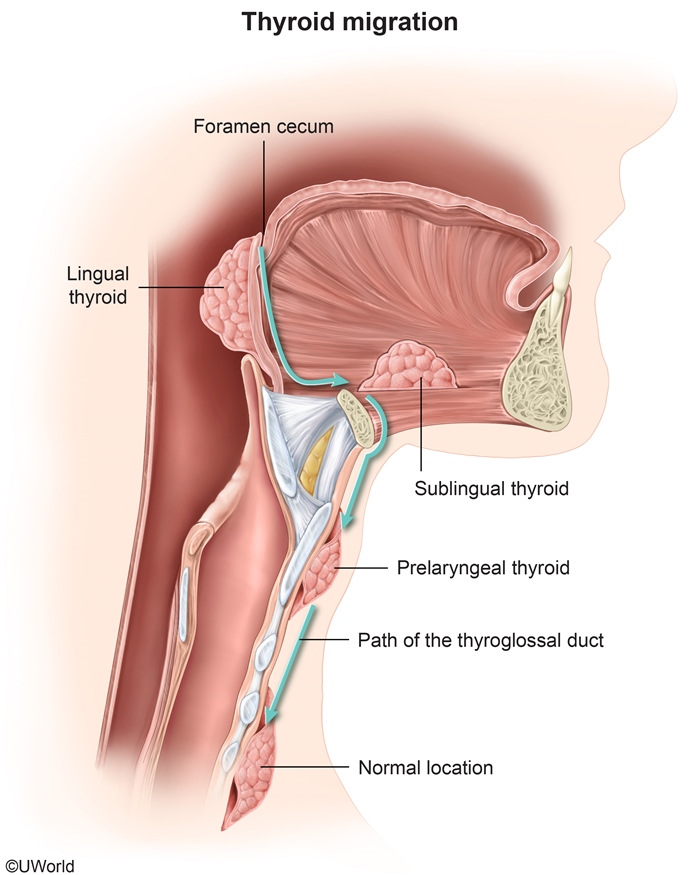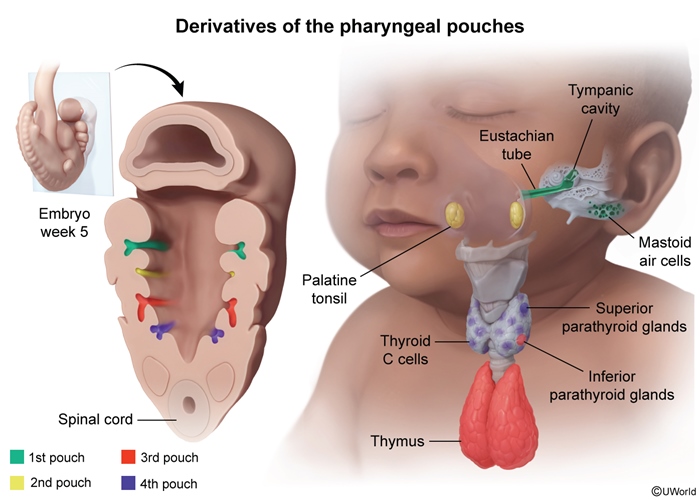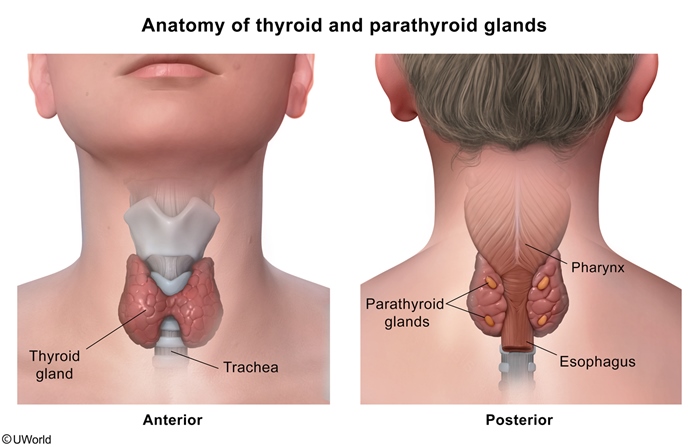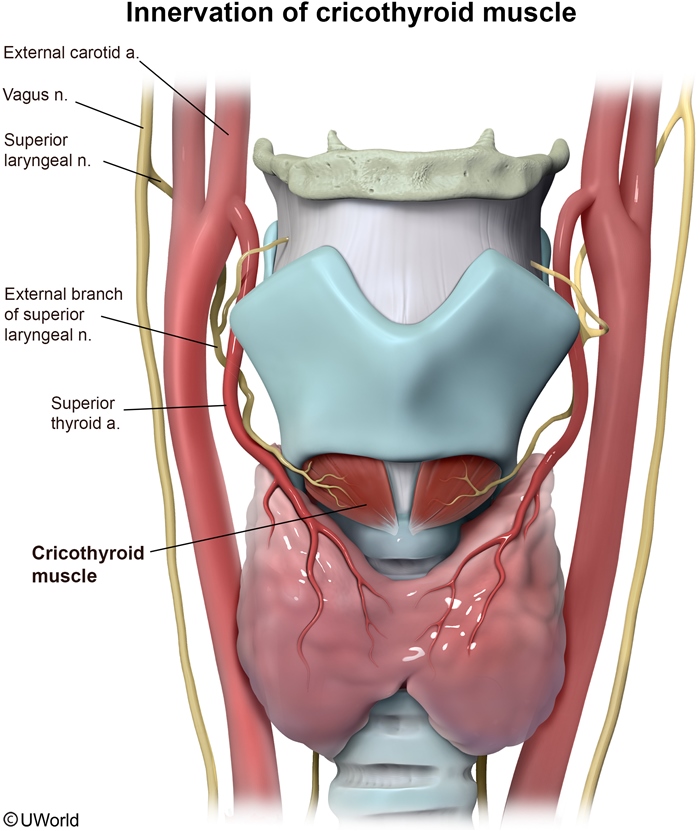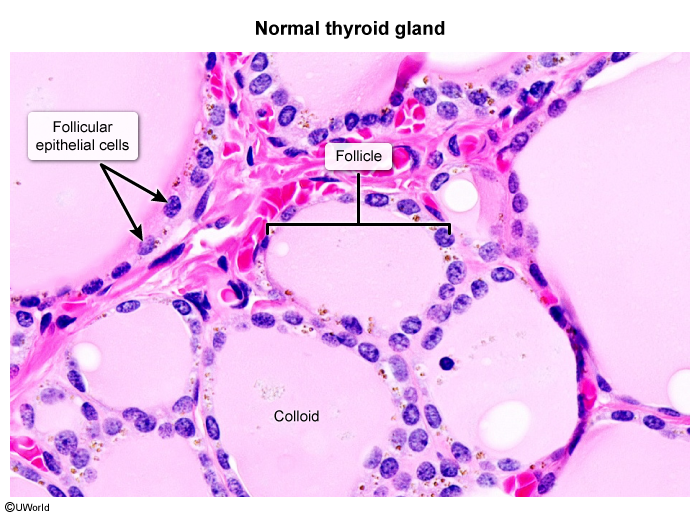Thyroid Physiology And Diagnostic Testing
Article Sections
Introduction
The thyroid is a small endocrine gland that plays an important role in regulating the basal metabolic rate. Thyroid disorders are very common globally and can include hyperthyroidism (overproduction of thyroid hormone), hypothyroidism (underproduction of hormone), and a variety of neoplastic and inflammatory conditions.
Embryology
The thyroid is primarily an endodermal derivative. In utero, the thyroid gland forms from an outpouching of pharyngeal epithelium at the base of the tongue (Figure 1). It then descends to the base of the anterior neck via the thyroglossal duct, which extends from the foramen cecum at the base of the tongue to the superior midline border of the thyroid (Figure 2). Normally, the duct then atrophies. Occasionally, failure of normal migration can leave residual deposits of ectopic thyroid tissue along the route of descent, and residual patency of the duct can manifest as a thyroglossal duct cyst.
Continue Learning with UWorld
Get the full Thyroid Physiology And Diagnostic Testing article plus rich visuals, real-world cases, and in-depth insights from medical experts, all available through the UWorld Medical Library.
Figures
